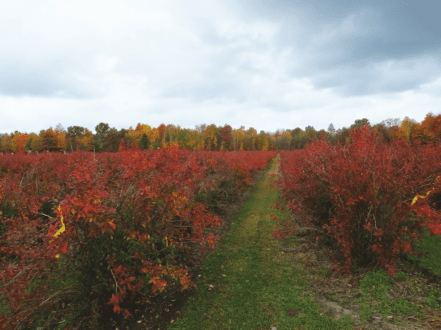

Jun 26, 2018US blueberry growing regions see mixed results
America’s top blueberry-producing regions are experiencing very different results in 2018, according to Extension agents and grower associations.
Georgia, in particular, has reported difficulty due to a late spring freeze that’s expected to drop its production by more than 60 percent. Oregon is predicting a bumper crop, while Michigan and Washington’s production looks to be steady.
Here are some of the reports from some of the country’s top blueberry producing states.
Washington
“The first harvest of blueberries in eastern Washington was on June 7,” said Alan Schreiber of the Washington Blueberry Commission. The first harvest was of organic berries for the fresh market.
“Harvest volumes right now are low but are expected to pick up significantly by the end of this week,” Schreiber wrote in mid-June. “Harvest in western Washington is expected to start the second week of July. Crop load looks very heavy across the state. The current projection is for a 17 percent increase over 2017 coming in at 138 million pounds – but that is only a projection.”
Washington harvested 119,650 million pounds of blueberries in 2016, according the USDA National Agriculture Statistics Service (NASS). The state’s season for the berries runs from July to September.
Oregon
The Oregon Blueberry Commission wrote on its website that “this year’s crop is looking bigger and better than ever.”
“In fact, Oregon growers are expected to harvest more than 100 million pounds of blueberries this year, another production record,” the commission wrote in an update. The Oregon Blueberry Commission claims its growers “routinely realize the highest crop yields per acre compared to any other state, an estimated 20,000 pounds per acre, or more.”
Last year, Oregon growers produced 45.1 million pounds of blueberries for the fresh market and 52.4 million pounds for the processed market, for a total 97.5 million pounds of production, according to the commission.
The state’s season for the berries runs from July to September.
Michigan
“The fruit growing season continues without major incidents,” Carlos Garcia-Salazar, a small fruit educator with Michigan State University (MSU) Extension, wrote in a June 12 report. “However, winter injury to blueberries and strawberries is showing up in most fields, especially inland (Allegan, Ottawa, Muskegon and Kent counties), away from Lake Michigan shores.”
Blueberries were still all green.
“As the season progresses the impact of late winter temperatures is showing more, and more. Blueberry fields by Muskegon are showing winter damage similar to the one observed at West Olive-Nunica area. Bluecrop and Elliott are showing the most damage. Shoots look like they will have plenty of fruit but no leaves. As the season progresses, the fruit in those canes will not reach maturity. Since none of these fruits will reach maturity, growers need to prune damaged shoots now that they are easy to spot.” Mummyberry shoot strike had been observed at some locations in Allegan and Ottawa counties, Garcia-Salazar said.
In southwest Michigan, some fields had standing water in low spots, according to a report from MSU’s Mark Longstroth and Bill Shane. The moisture led to grower concern of the rainfastness of the pesticide sprays.
Michigan harvested 110 million pounds of blueberries in 2016, according to USDA NASS. Its blueberry season typically runs from mid-July to the end of August.
Georgia
Georgia blueberry growers’ overall losses of both highbush and rabbiteye varieties in the 2018 crop could exceed 60 percent, according to the University of Georgia Extension.
This would mark the second consecutive year of significant loss for Georgia blueberry growers. Unlike last year’s devastating freeze that hit the growing region March 15-16, 2017 after a mild winter, the 2018 losses are not directly attributed to one catastrophic freeze.
“We had another warm February leading many of our plants to enter full bloom,” blueberry grower and Blueberry Commission member Russ Goodman said in a news release. “Then March brought back-to-back weeks of freezing temperatures that damaged some fruits and blooms, followed by a cool, cloudy and windy April.”
In 2014, Georgia produced 95 million pounds. Last year’s crop dropped to 30 million, and similar losses are expected for 2018. Original expectations for this year’s crop were about 120 million pounds. Georgia’s blueberry season typically runs from June 1 until early August.
New Jersey
“The harvest has begun here in New Jersey on the Duke variety,” said Rutgers University Professor and Extension Agent Gary Pavlis. “Quality is excellent however yields are expected to be down due to poor pollination. The excessive rain during bloom really hampered honey bee activity which is quite evident in the fields now. Labor is quite short at present which presents a problem for many growers. Now that it has dried out and gotten hot, I don’t see any major insect or disease problems out of the ordinary.”
New Jersey harvested nearly 44 million pounds of blueberries in 2016, according to USDA NASS. The state’s blueberry season typically runs from June 20 to Aug. 25.
– Stephen Kloosterman, FGN Assistant Editor
Above: The nation’s top blueberry-producing regions are seeing varied production results in 2018. Photo: Gary Pullano














